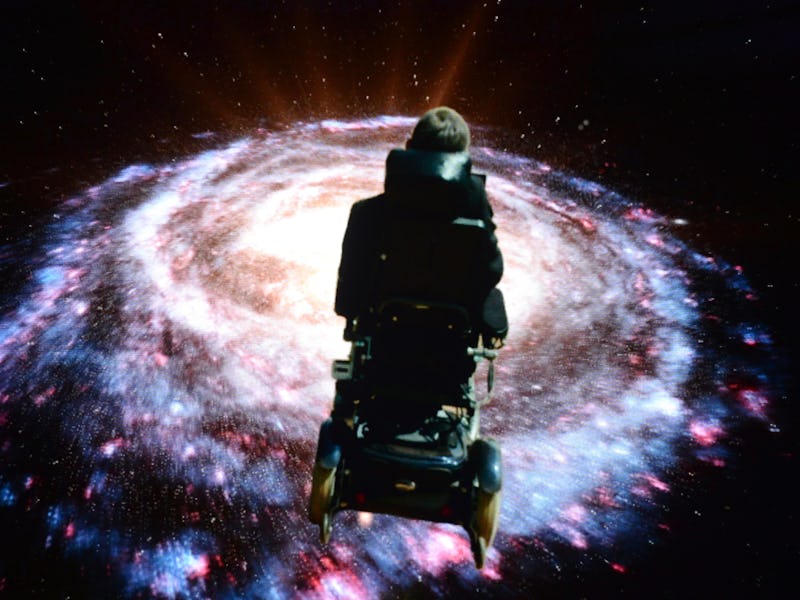Apocalyptic Fears Drive Stephen Hawking's Support for Breakthrough Starshot
Stephen Hawking thinks living on Earth isn't sustainable. That's why he supports an effort to get us out of here.

Breakthrough Starshot, estimated to literally get off the ground in 20 years, has the potential to totally change our relationship with space. The technology will employ gram-scale nanocrafts that will be pushed through space via light beam. It may allow us to see stars up close, search for extraterrestrial life, and — what Stephen Hawking is likely most excited about — get us the hell off Earth.
At the start of Tuesday’s press conference, Hawking was pretty quiet on why he had volunteered to be on the board, and one of the very public faces, of Starshot. When asked what he was hoping to get out of the project, Hawking only responded that: “Hopefully, a successful launch to Alpha Centauri within a generation.”
But soon enough, Hawking cut to the point.
“Earth is a wonderful place, but it might not last forever,” Hawking said through his text-to-talk machine. “Sooner or later we must look to the stars. Breakthrough Starshot is a very exciting first step on that journey.”
Giving support to Breakthrough Starshot is in line with one of Hawking’s long-standing interests — saving humanity. Hawking is not shy about his opinion that humans will be unable to live on Earth forever. In January, Hawking said that whether it’s asteroids, natural disaster, or our own murderous tendencies, we have about a thousand to ten thousand years before life can no longer be sustained here.
Stephen Hawking at the press conference for Breakthrough Starship.
Our demise seeps into Hawking’s public appearances, regardless of the planned topic. In a 2016 lecture on black holes, Hawking cut into an aside about the increasing chances of disaster happening on Earth and emphasized the eventual need to create space colonies. During a 2013 talk on stem cells at the Cedars-Sinai Medical Center in Los Angeles, Hawking urged the need to explore space so that humans might find a new habitable planet.
It seems that Hawking may see Breakthrough Starshot as the key to this escape — it certainly seems more to his interests than the intelligent life-hunting portion of the Breakthrough Initiative, which Hawking endorsed in 2015 (he doesn’t trust advanced species to not try to kill us).
At Tuesday’s conference, project head and financier Yuri Milner said that with Starshot they will “leave the fuel behind.” Space travel, as of now, is slow. The team behind Starshot believe that their propulsion system will eventually allow us to travel around our solar system — and beyond — with greater ease. It’s this new opportunity for exploration that could find us the interstellar home that Hawking dreams about.
“This is the first new approach to propulsion, really, for a century — since the liquid fueled rocket,” said Breakthrough Starshot team leader Pete Worden at the press conference. “We can search our galaxy and beyond for intelligent life, maybe even across the entire universe.”
Hawking’s role on the board is to serve as part of an advisory committee of esteemed engineers and scientists.
Hawking’s not the only famous face — the secondary management board includes the likes of Mae Jemison and Saul Perlmutter — but it’s undeniable that he’s the most famous. Hawking has been around the block enough to know that big names bring credibility, which ciphers into financial support. The stakes, as Hawking has insisted, are high enough to do most anything — our existence could be dependent on space exploration.